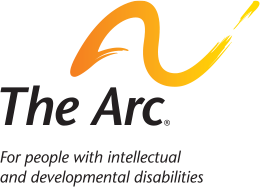Journalist Resource: How to Cover Disability Pride Month 2025 (Reporting Guide)
What Is Disability Pride Month?
Every July, Disability Pride Month offers newsrooms an opportunity to report on one of the largest, and too often overlooked, communities in the country: people with disabilities.
Disability Pride Month commemorates the signing of the Americans with Disabilities Act (ADA) on July 26, 1990. Today, more than 1 in 4 U.S. adults identify as having a disability. But despite its size, the disability community remains underrepresented and often misrepresented in media coverage. Disability Pride Month offers a chance to tell more accurate, nuanced, and inclusive stories about disability identity, civil rights, and the barriers many still face.
Why Cover Disability Pride Month in 2025?
The 2025 Disability Pride Month theme – We Belong Here, and We’re Here to Stay – was chosen by a national group of people with disabilities. The theme reflects both the community’s resilience and growing concerns about threats to disability rights and services. While people with disabilities are part of every community, many are made to feel like outsiders.
Several policy and cultural issues are driving new urgency:
- Medicaid: Proposed cuts and work requirements threaten essential care and independence. (learn more)
- Special Education: Federal cuts and nationwide staffing crises are widening equity gaps in schools. (learn more)
- Social Security: Delays, office closures, and policy rollbacks are limiting access to benefits. (learn more)
- DEI Rollbacks: As corporate commitments to diversity decline, disability inclusion is caught in the middle—impacting jobs, visibility, and representation.
- Language: Slurs like the R-word are re-entering public discourse, fueling stigma and exclusion. (learn more)
These national issues have deeply local consequences—offering timely, community-centered story opportunities for journalists across the country.
What Does Disability Pride Mean?
Disability Pride affirms that disability is a natural part of the human experience, not something to hide or fix.
For some, pride means celebrating identity. For others, it’s about rejecting shame and fighting for the right to exist fully and freely. Pride can be personal, complex, and sometimes quiet—but at its core, it’s about dignity and belonging.
While distinct from LGBTQ+ Pride Month in June, Disability Pride Month in July similarly emerged from civil rights struggles and a refusal to be erased.
Reporting Tips: Ethical, Inclusive Coverage of Disability Pride Month
- Talk to people with disabilities in your community about what Disability Pride means to them, and what’s at stake. Their lived experiences bring depth and urgency to many of today’s issues. Avoid only interviewing caregivers or parents unless necessary for context. Some individuals may use communication supports. Those tools should be accommodated and not viewed as barriers. Steer clear of oversimplified or patronizing narratives. Respect disabled people’s expertise and full humanity.
- Localize national policy stories. Explore how federal threats and cuts to Medicaid, SNAP, special education, and Social Security are affecting people with disabilities and families in your coverage area. These are national crises with local consequences and they’re newsworthy.
- Cover Disability Pride events—but also go deeper. Disability Pride events offer entry points, but deeper stories lie in ongoing struggles for equity, representation, and access. Ask what the community wants covered and how they want to be seen.
- Cover disability all year. Disability Pride Month is a vital moment to connect, but the need for inclusive, accurate disability coverage continues year-round.
Finding Local Stories & People
Local chapters of The Arc, disability organizations, advocacy groups, and self-advocate networks are often willing to connect reporters with people with disabilities, families, and professionals eager to share their experiences. Many have long histories of working with media and can help ensure authentic, respectful sourcing.
Helpful Resources for Journalists Covering Disability Pride Month
Explainer: What Is Disability Pride Month? (The Arc)
History of the Disability Pride Flag (Columbia University)
Disability Language Style Guide (National Center on Disability & Journalism)
Contact
Jackie Dilworth
The Arc of the United States
dilworth[at]thearc.org




























